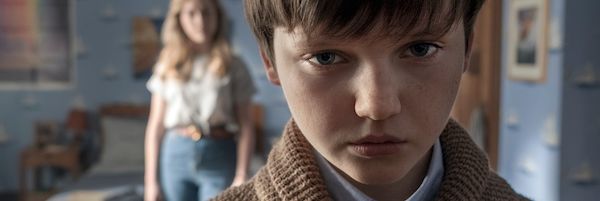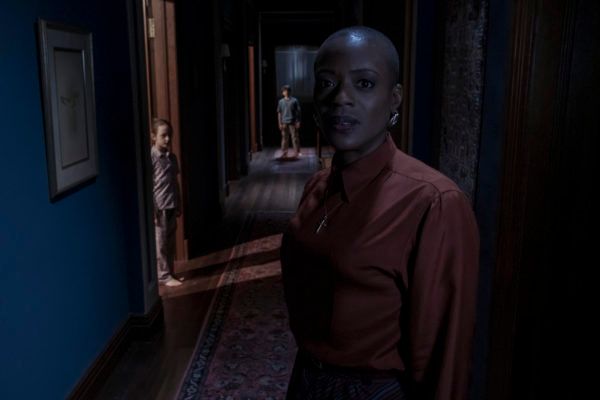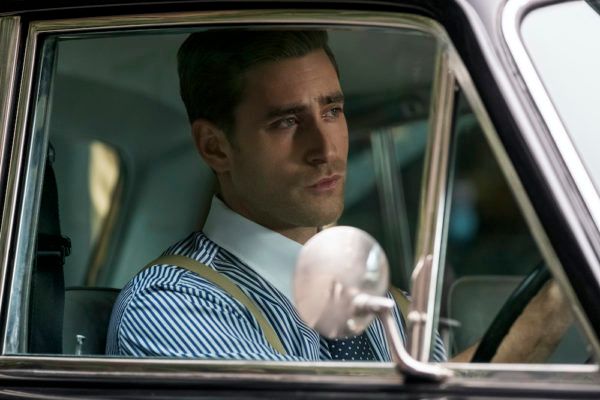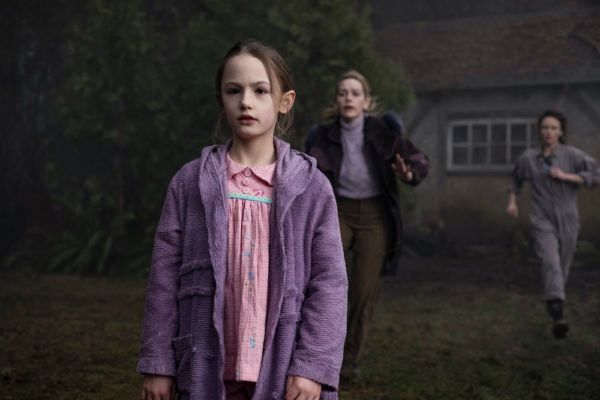[Editor's note: The following contains spoilers for The Haunting of Bly Manor.]
Netflix’s The Haunting of Bly Manor is a wonderful, multilayered Halloween treat that invites repeated viewings, where you can uncover all the fine details (and, yes, hidden ghosts). One of the more intriguing elements of this season is the introduction of “dream hopping.” We should probably pause here to reiterate that if you haven’t watched all of The Haunting of Bly Manor, turn back now. We’re about to get deep into it with spoilers and trust us – you do not want this spoiled.
We’ll say again: spoiler warning, turn back now if you don’t want the season ruined.
Okay, so dream hopping is a sort of out-of-body experience that both ghosts and human beings experience, but we were unsure of the mechanics and when certain characters were engaging with the practice. So, while on an exclusive Zoom roundtable with The Haunting of Bly Manor creator (and super swell guy) Mike Flanagan along with some other journalists, we had to ask him about dream hopping.
“Our idea was that the experience of being a ghost was something we really could really dig into this season,” Flanagan began. “If you die on the grounds of Bly Manor, the first thing that happens is you go through a period of intense denial and that's where we had Hannah (the amazing T'Nia Miller), and that's that kind of Wile E. Coyote metaphor that Peter/Miles brings up later. During that time, we tried to illustrate it with Peter Quint (Oliver Jackson-Cohen) when he's first killed in the fifth episode.” That fifth episode, “The Altar of the Dead,” seems to be key in terms of understanding the dream hopping phenomena.
Flanagan continued: “When you see him come out and he doesn't remember what happened and he picks up the doll and as he stares at it in his hand and starts to remember, it falls through. So the idea was that this first stage of it was this kind of dreamed life that people could still carry on. They could dream up new clothes for themselves, which Hannah does, why she keeps kind of changing her outfit scene to scene, physically interact with the world, appear to people, because they're always putting out the effort because of muscle memory and denial basically.” And it’s true – in our interview with Miller, she talked about how her character’s earrings were key to her understanding of where/when that character was.
“But that once you accept the fact that you're dead like Wile E. Coyote running off the cliff, at that point, a whole bunch of the rules immediately change,” Flanagan said. “Once that realization kicks in, you're no longer able to reliably affect the world physically, and at that point, your experience of your life as you try to experience this new way of living becomes very non-linear. At that point, you're kind of involuntarily bouncing back and forth between what is the present, what is the past, what is the future because of what Nellie (Victoria Pedretti) said in Season 1 that moments aren't linear, they aren't like dominoes; once you're on the other side of death your entire life falls around you like rain or like confetti.” That’s right folks – there is a tangentially connection to the original season, The Haunting of Hill House.
Now we’re getting to the heart of dream hopping, which Flanagan describes as “bouncing between those moments, playing the part as you remember them.” Flanagan continued: “What was really fun to play with here was that idea of the decay of memory. They say we each die twice, that we die that our body ceases to be, and then we die when we're forgotten, right? That idea that a ghost is subject to that deterioration, that as their own memories fade and people's memories of them fade, the ghost kind of physically fades, all the stuff goes away, but that their memories become less and less reliable.”
It’s this version of ghostly existence that besieges one of the main characters in the show. “That's what Hannah is going through the entire time. She's trying to hold on to some semblance of linear existence, but she's killed seconds before Dani first arrives to meet her in the first episode,” Flanagan explained. And here’s where they tip their hat (something that we’re sure many of you picked up on): “When we meet her, she's only been dead for a few seconds. She's still staring down at her body in the well, and Miles is just coming out of his moment of possession. Their very first scene is she just died, but after that, you see her interacting with things, but she never actually drinks tea or eats food. She makes up excuses for it all the time. She appears and disappears, we never know where she lives or Dani keeps talking about how she can't find her. She turns around she's gone, so that's happening, meanwhile the ghosts who have been dead longer than Hannah are also going through this, but they're further through it.”
This progression is evident in other characters, as well. “Rebecca Jessel (Tahirah Sharif) is bouncing all over the place and she's reliving the peaks of her love story with Peter and also the worst parts,” Flanagan said. “But interestingly, Peter Quint is only being stuffed back into the worst memory of his life, which I think as a proper little atheist like I am, that to me is hell. It's not a lake of fire. It's that when we're dead, we live in our moments of the most shame or regret and if we're stuck there, the repetition of that I think is about as hellacious as anything I can imagine.” Yikes. “Peter's off in that world, but they both want to come back and inhabit, possess a living body, so that they can leave the grounds of Bly and have a new life,” Flanagan said. “ In order to do that they have to work on Miles and Flora and basically convince Miles and Flora to seed the control over their minds and bodies, to basically leave the conscious and be tucked away in the subconscious.”
This is where the other phase of dream hopping is introduced into the series – dream hopping by living humans. In the world of The Haunting of Bly Manor, is apparently something that can be learned and implemented, sometimes to the detriment of those doing the dream hopping.
“They’ve [the ghosts] been teaching them while alive to hop in and out of their memories in their own imaginations. That is basically like dreaming, they will relinquish control over their conscious mind long enough for Peter to take the wheel,” Flanagan explained. “It's a place that keeps them docile. It keeps them from pushing these interfering spirits back out of their bodies. More and more frequently as Peter gets better at doing this and as Rebecca gets better at doing this to Flora, the kids don't have that control. They're not voluntarily giving up that driver's seat. They're being pushed aside and pushed into some pleasant memory, none of which is real and that the kids know on some level isn't real in order to keep them quiet.” This, at least to us, is one of the scarier aspects of the series, that succession of control to what is, essentially, an otherworldly force.
Flanagan then explained what the goal of the ghosts really was. “The end game is to reduce these children's souls basically into a size that is so small that they'll just forever exist in these little memories and these ghosts can just walk out in their bodies and have another chance at life,” Flangan said. “That's the very long version of what took us six months to figure out in the writers’ room as we tried to break it.” Honestly, as he explained it, you could tell that he and the writers killed themselves crafting this impressively elaborate storyline. And now that you know all about time hopping, is it time to watch the entire series again? We think so too.
For more from our interview with Flanagan, click on the links below. Look for the full interview on Collider soon.




